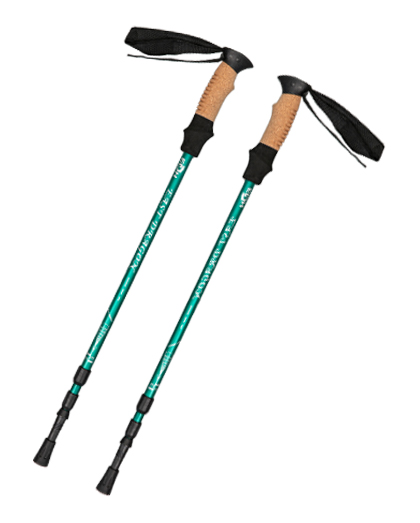

Trekking poles are an extremely popular hiking accessory which serve to help walkers gain more balance and also to give more stability on difficult terrain. While walking the grounds you may feel tired and some parts of your body may ache from the uneven ground. This is when a trekking pole can really help you. It will take off all the pressure from your legs, thighs and back. It will increase your balance and your ability to walk long distances without getting tired.
You may have heard about trekking poles but you might not have a clear idea about how useful they really are. In this article you will learn about their history, their uses and their popularity. There is no doubt that these trekking poles have had a major role in mountaineering for many years. They were used by mountaineers as a means of crossing difficult terrains on foot. The poles were also used for hiking, which gave them great stamina as well as a way to keep their balance and endurance up for long periods of time.
Trekking poles were made from two main materials; aluminum and carbon fiber. The trekking poles used in the past were usually constructed from aluminum but they weren't very comfortable or even safe to use. Since then the trekking poles have gone through several advancements that include better materials, designs and constructions. This has led to the trekking poles becoming lighter, easier to use, stronger and more comfortable to carry on long hikes. One of the most important aspects of the trekking pole however is its weight, it should be comfortable to carry but it shouldn't feel like it is dragging your back along the trail.
Trekking poles come in several different models with the most popular one being the trekking pole telescoping from REI. This is a collapsible model, which is very handy to have in your back pack. It can store in your backpack without taking up too much space so you can still carry other essential items as well as food and water. Although the trekking pole is a great invention it does come with some disadvantages. They include the fact that it is a bit clumsy when trying to carry it over rough surfaces and sometimes it can be hard to lengthen the frame because of its short length.
Tents And Backpack Pockets Most people who use trekking poles will also use backpack pouches to carry their tent poles. Because it is very awkward to lug heavy trekking poles around without using your legs, it is recommended that you purchase a set of backpack pouches instead of just purchasing one single tent pole. Some hikers even use regular trekking poles and attach them to their backpack as a sort of combination poles and tent poles.
Fiberglass Wires A very convenient option for hikers is to buy a set of fiberglass trekking poles and connect them using copper or silver hooks. These types of hooks are very easy to thread through the loops on the top of your backpack and they don't cause much discomfort when pulling the bag around. The downside to these is that because the material is so absorbent, these can sometimes get snagged on branches or other objects and can become damaged easily. The best option for this is to leave them on the trail and carry another fiberglass wire with you.
Single Use Trekking Poles If you just want to take a shorter hiking adventure than you can usually go hiking with a single trekking pole. You will have to carry your own backpack, but it should not be too heavy. These are usually made out of nylon, which is also very lightweight. These trekking poles do not usually come with a warranty, but most stores that sell them offer replacements if anything happens to them on the trail.
Other Types Of Hiking Poles If your main concern in choosing trekking poles is weight, single use trekking poles may be a great choice for you. These are generally less heavy and more manageable, so you don't have to carry quite as much with you on the trail. Some people prefer using trekking poles that they can exchange on the trail for an emergency reason. You can find different types of single-use poles in various colors and materials such as carbon fiber and others.
